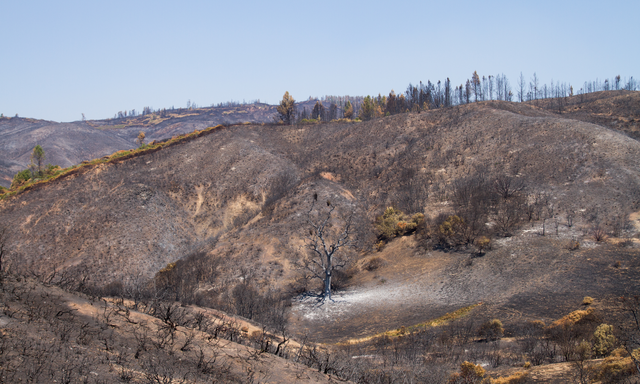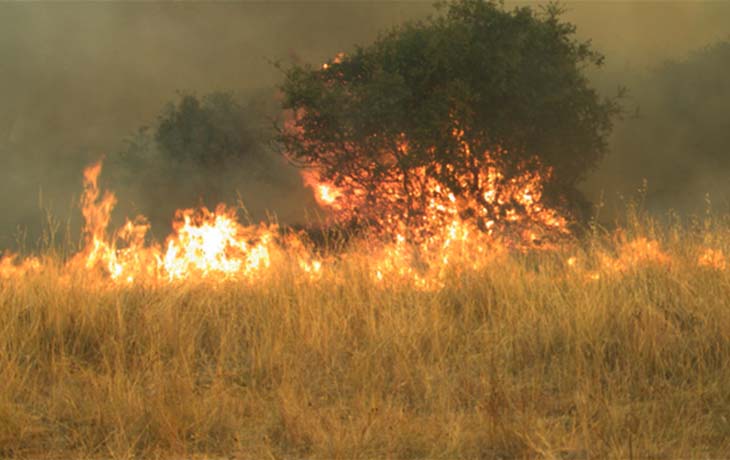Reposted from the Berkeley ESPM News
A new study appearing in the journal Diversity and Distributions challenges these perceptions. In the study, scientists from the Department of Environmental Science, Policy and Management (ESPM) at UC Berkeley found that the majority of recent wildfires in California have occurred outside of conifer forests. Moreover, the authors showed that fires burning outside of these forests potentially pose a greater threat to biodiversity and are more likely to occur in areas of dense human infrastructure (e.g., near houses). In short, the prevailing focus on forests is misleading and carries potentially dangerous consequences, the authors conclude. They call for a more nuanced approach to wildfire to protect California's unique biodiversity and people.
“Forests are just one piece of the incredible mosaic of ecosystems that make up California,” said the study's lead author and current ESPM graduate student Kendall Calhoun. “Ecosystems outside of conifer forests, like California's oak woodland savannahs, also provide key ecosystem services to the people who live around them and support an incredible amount of biodiversity. Understanding how ecosystems outside of conifer forests respond to fire is critical to their future conservation.”

To conduct the analyses, Calhoun and the research team mapped out California wildfires from the last twenty years (2000-2020) and examined the land cover composition of each wildfire. They also overlapped the wildfire dataset with areas designated important for conserving biodiversity—specifically, those named Areas of Conservation Emphasis by the California Department of Fish and Wildlife. Their results illustrate that burned shrubland, hardwood, and conifer ecosystems all overlap with areas of special conservation concern for several wildlife species. Tailored management for each of these coarse ecosystem types could be critical for future conservation as megafires become more frequent and extreme, they assert.
The authors found that shrubland wildfires accounted for the largest amount of area burned and that non-conifer wildfires made up nearly two-thirds of the total area burned during this time period. In contrast, research on non-forest California wildfires from the last twenty years made up only 30% of the academic literature. This mismatch highlights a need for more representation of these unique non-forested ecosystems in future wildfire research and management.
“We were surprised that nearly 70% of studies on wildfire in California have focused on conifer forests, but such forests comprise only a third of fires,” said ESPM professor and the study's senior author Justin Brashares. “By many metrics, fires outside of forests pose a higher threat to human well-being and biodiversity. Funding for management and research on the majority of fires occurring in the 68% of California that is not forested should be a state and federal priority.”

Previous research has found that the most effective wildfire management strategies are those that are ecosystem or region specific. The authors argue that to properly face the growing issue of megafire in California, researchers and land managers across the state must expand and diversify strategies to create ecosystem-specific wildfire management strategies and policies. To be successful, the authors add, these strategies must also draw on indigenous knowledge and leadership, which could help identify tools that can protect landscapes, wildlife, and people from future extreme wildfires.
Additional authors of this study include current ESPM PhD candidates Amy Van Scoyoc, Phoebe Parker-Shames, and Millie Chapman; recent ESPM PhD graduates Carmen Tubbesing, Alex McInturff, Christine Wilkinson, and Dave Kurz; and Kaitlyn Gaynor, an ESPM alum and current postdoctoral fellow at the National Center of Ecological Analysis and Synthesis.
